10 Must-Know User Feedback Strategies for SaaS Companies
Last updated on Tue Sep 17 2024
User feedback is the lifeblood of every SaaS product. It helps teams stay customer-focused, reduce churn, and continually improve their offerings.
It is one thing to say user feedback is important—obtaining it in a useful and productive way is an entirely different matter.
And of course there are many tools to help… So many tools. You may be thinking that is what is in store for you here.
Well, it's not.
This guide is about the strategies behind generating productive and highly actionable feedback. Of course some examples and tools are thrown in the mix, but we're here to talk about the peanut butter and the jelly—not the knife to spread it with.
Strategy 1: Collect customer feedback continuously
The first thing to consider is that customer feedback is a living entity within your business. It must be fed and nurtured, and it changes with time.
Feedback at various stages of the user journey
Gather feedback at key points like onboarding, feature usage, and post-support. This gives you targeted insights into the user experience and interaction with your product. Use in-app prompts, surveys, or live chats to collect feedback in real-time. For instance, triggering a survey after users complete a task or upgrade to a paid plan helps you pinpoint any pain points or successes in the experience.
Another great and simple way to gain this continuous feedback is through a feedback widget like Frill’s feature requests widget. The super easy to use widget integrates seamlessly into your product and allows you to collect user feedback at those key moments and everything in-between.
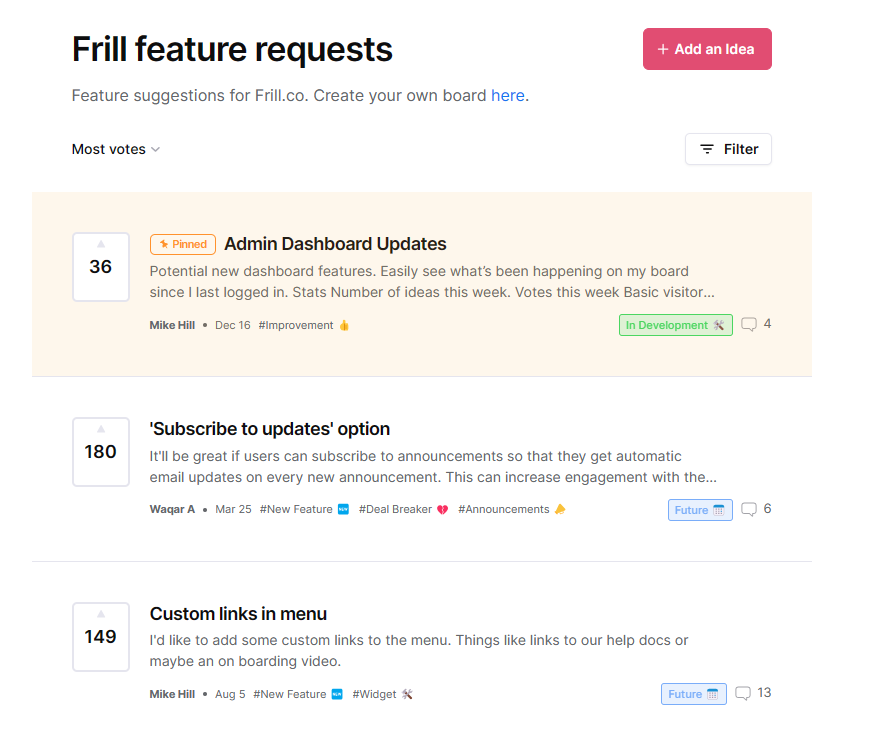
Balance proactive vs. reactive feedback collection
Combine proactive feedback, such as regular Net Promoter Score (NPS) surveys, with reactive methods like following up after support interactions. This balance helps you catch both anticipated issues and those that arise unexpectedly. Slack does this well by gathering ongoing feedback while also checking in after customer service interactions.
This Asana survey is a great example of proactive feedback. It is short and to the point (i.e. select all that apply). It offers the user the ability to provide feedback without being burdensome or too disruptive of their workflow.
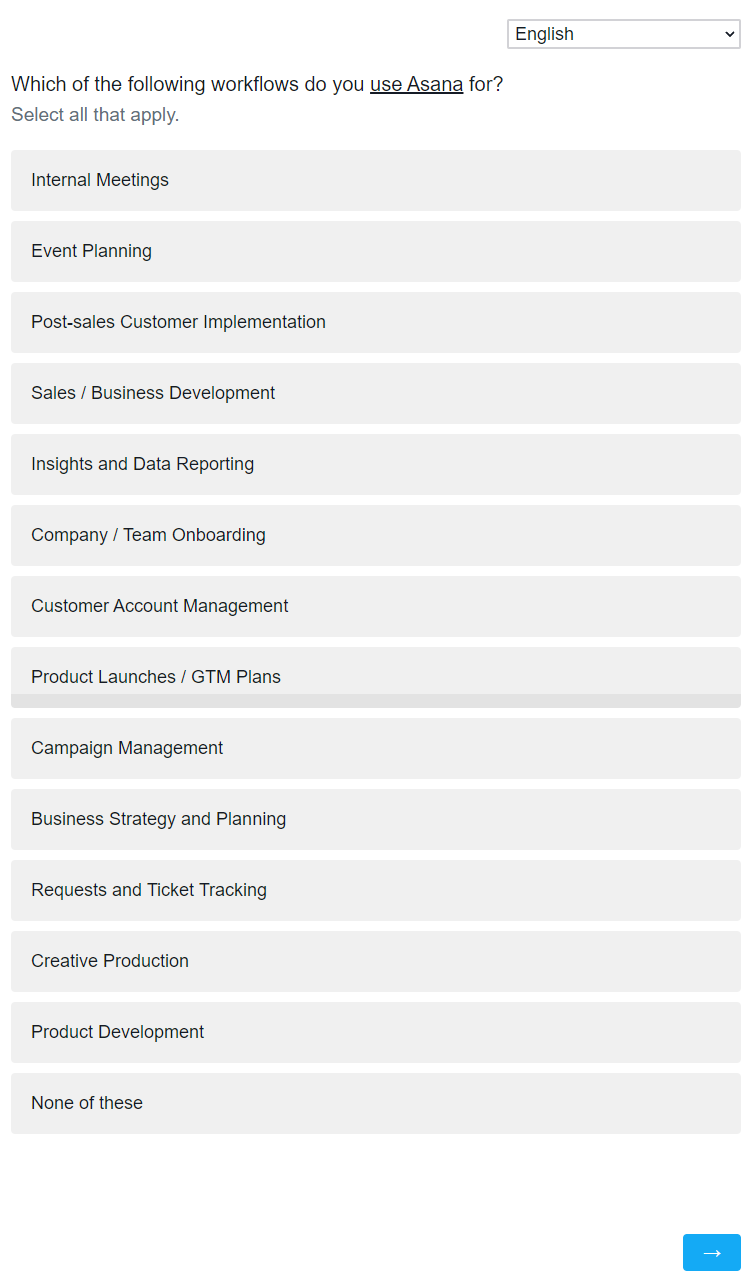
Choose the right format for feedback
The format you use depends on the insights you’re looking for. Quick formats like star ratings or thumbs-up/down buttons are great for gathering light feedback without interrupting the user. Long-form surveys work better when you need more detailed responses.
If your product primarily exists in the mobile sphere you’ll want to focus heavily on quick formats like thumbs-up icons. This keeps it easy for users, and it is what they are expecting.
Handling feedback from different user segments
Segment your users—trial users, paying customers, and power users—because each group has different needs and customer satisfaction will depend on how you cater to those needs.
Tailor your feedback collection based on segments for more actionable insights. For instance, you can focus on feature requests from power users and use onboarding feedback from trial users to improve conversion rates.
Strategy 2: Prioritize feedback based on business impact
Not all feedback is created equal. Be sure to prioritize and keep your product on track.
Use feature voting to prioritize feedback
Let users tell you what they want by voting on features. This gives you clear data on which features have the highest demand. It also helps consolidate requests and improves user engagement.
Frills feature voting tool is a great way to collect this input. By focusing on the most upvoted features, you can prioritize development based on what will make the biggest impact for your users.
Align feedback with your product roadmap
Feedback should align with your broader product strategy. It’s not just about what’s popular—focus on what drives business goals.
Use tools like automated feature prioritization matrices. These matrices allow you to weigh different components of feedback and identify key requests for your product team to develop. This ensures you prioritize features that fit both user needs and your long-term vision. For example, if integration is key to your roadmap, prioritize feedback related to that area.
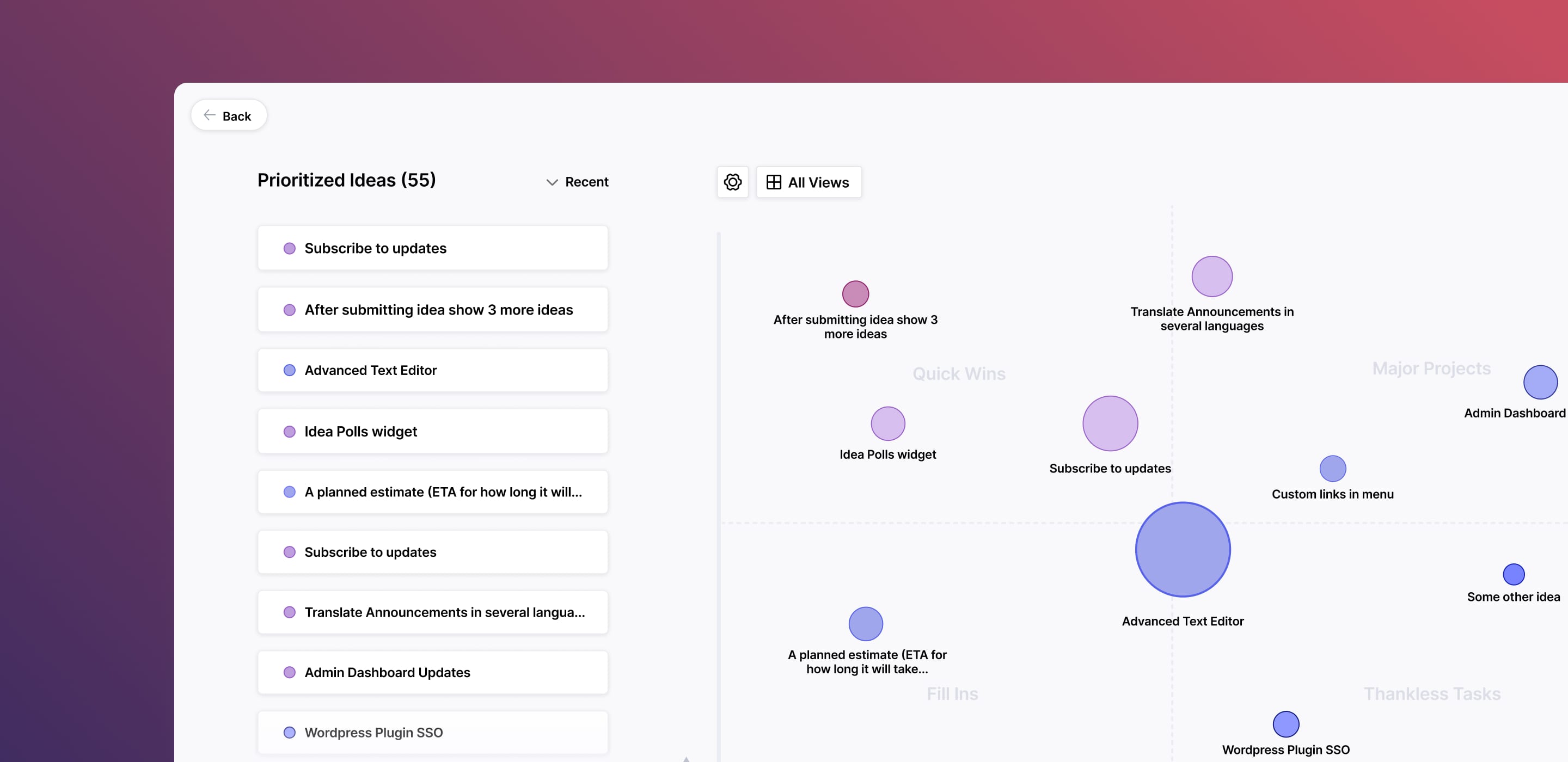
Consider user segments in your prioritization
Not all users have the same influence on your product, so you need to prioritize accordingly. High-value customers, like enterprise clients, often have requests that can impact your business significantly. On the other hand, low-value customers may focus on usability improvements that affect broader adoption.
High-value customers: Focus on features that drive retention and revenue, such as advanced integrations or premium services. Responding quickly to their needs builds loyalty.
Low-value customers: Address their feedback with scalable solutions. Focus on improvements like usability and onboarding, which enhance the overall product without pulling resources from higher-priority projects.
The right feature request tool and prioritization matrix will allow you to gain these insights holistically. For example, Fill’s feature request can be prioritized based on criteria you set. Feature voting and customer importance can be included in the ranking. Then when you go to the matrix view, you see the features automatically collected by keywords and ranked based on your settings. This way you can directly incorporate user segments into the prioritization.
Strategy 3: Incentivize users to provide feedback
People like recognition and rewards. Make sure to utilize these to increase your feedback.
Offer rewards for feedback
Encouraging users to share feedback can be as simple as offering rewards. This could be discounts, free trials, or early access to new features. By giving users something in return, you motivate more of them to engage. For instance, freemium SaaS platforms often give premium feature access to users who provide detailed feedback, benefiting both sides.
Recognize and highlight contributors
Publicly recognizing users who contribute valuable feedback helps build a sense of community. Whether it's mentioning them in release notes or giving a shout-out in a blog post, this recognition encourages others to provide their input.
Within your idea board, you should be able to comment directly on the idea card. This will give the recognition to each idea within the same space they are being requested and promote engagement.
Offer beta access to engaged users
Another incentive is offering beta access to users who consistently provide feedback. This gives them early access to new features and allows you to gather their detailed input before the full release. Users who are involved in beta testing feel more invested in the product, creating a feedback loop that strengthens their loyalty.
Strategy 4: Use public roadmaps
Let your customers know where you're headed.
Build transparency with a public roadmap
Share your product’s roadmap publicly to keep users informed about what’s coming next. This transparency builds trust and encourages user engagement. By showing features in development, planning stages, or recently launched, you help users feel connected to your product's evolution.
For example, Frill’s customizable public roadmap lets users track progress and even vote on upcoming features, ensuring they feel involved.
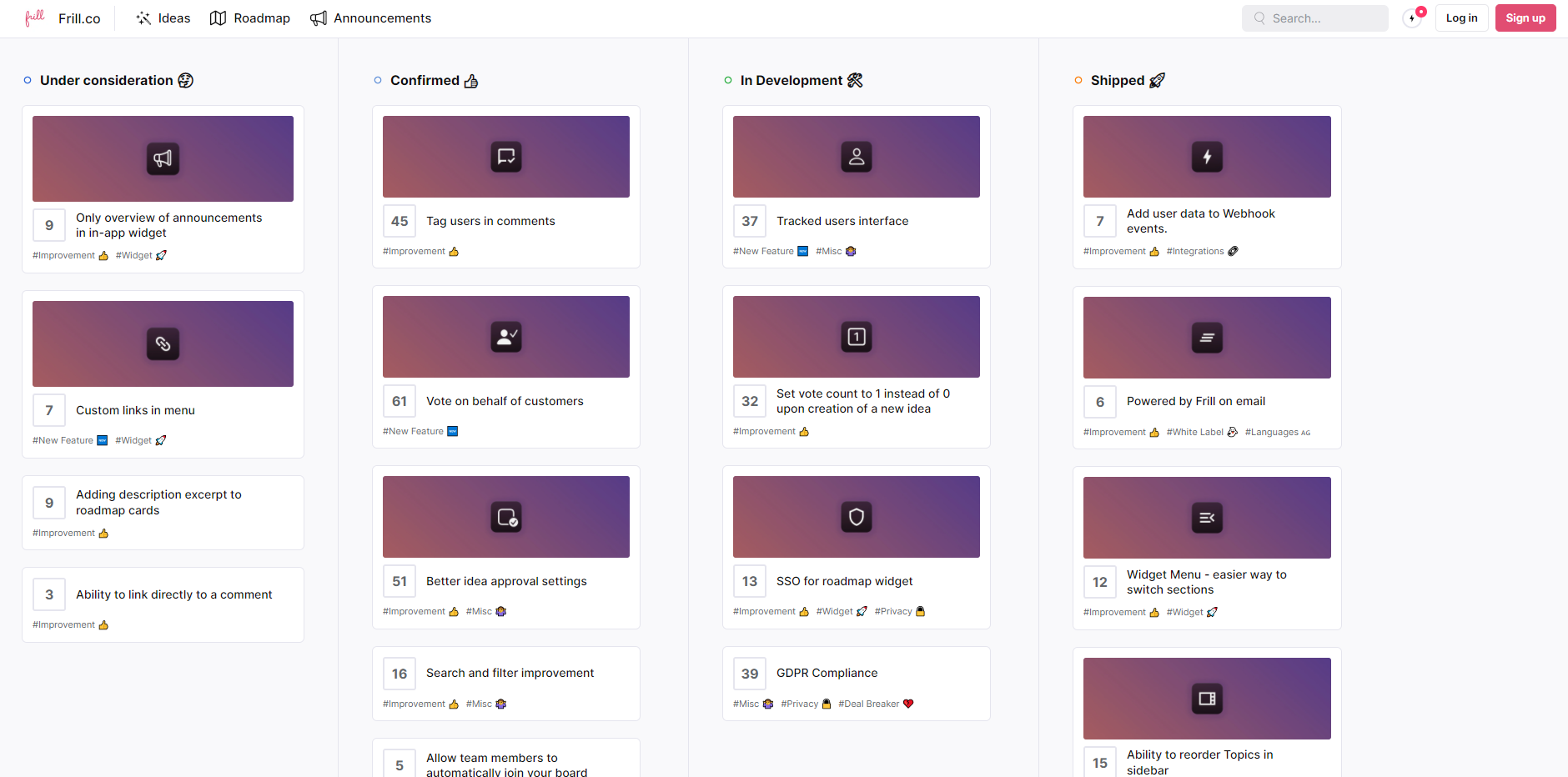
Encourage user participation in roadmap discussions
Allow users to interact with your roadmap by voting or commenting on features. This makes them feel like they’re contributing to the product’s direction. It also gives you direct input on which features are most in demand. When users participate, you gather insights that help you make better decisions and prioritize what matters most.
Manage expectations through transparency
A public roadmap helps manage user expectations by showing what’s under consideration, confirmed, in development and so on. This keeps users in the loop and reduces confusion about feature requests.
This transparency also cuts down on support tickets by letting users check for updates themselves. Regularly updating the roadmap helps keep your communication clear and your users informed.
Also, when choosing a public roadmap be sure it does not include timelines. This can transform your feedback into time management discussions and create a disappointed user base if you fail to meet your stated timeline.
Strategy 5: Segment feedback by user groups
Understanding who is providing the feedback can be just as important as the feedback itself.
Tailor and personalize feedback collection
Segment your users to gather more targeted feedback. Different groups—trial users, paying customers, and enterprise clients—have unique needs, so tailoring feedback collection ensures you get more relevant insights.
One way to utilize segmentation is by adding custom user attributes to the single sign on (SSO) token. This can then allow you to provide user segmentation for announcements as well.
Consider using a customer segmentation tool to help you in this process of identifying attributes. For example, Countersquare allows you to apply filters and use metrics to segment your audience.
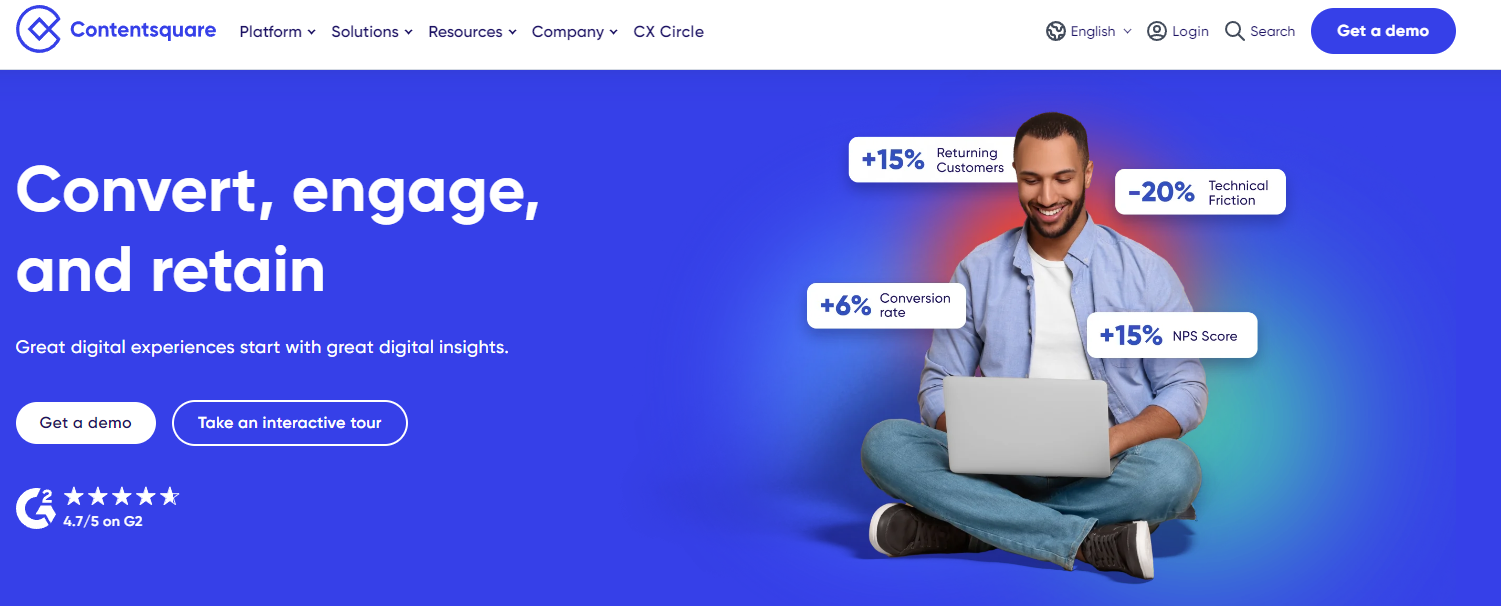
Prioritize feedback based on segment importance
Prioritizing feedback should reflect the value each segment brings to your business. High-value customers, like long-term or enterprise clients, have different needs than free-tier users. Here’s how to manage both:
High-value customers: Prioritize features that drive retention and loyalty, such as advanced functionality or integrations. Personal communication can strengthen relationships.
Low-value customers: Focus on scalable improvements, like better usability or onboarding. Addressing their feedback builds overall product satisfaction without pulling too many resources.
Strategy 6: Analyze sentiment in feedback
Is the user frustrated that a feature is missing, or is it more hopeful wishing? Understanding how the user is feeling in their feedback can be super helpful.
Use sentiment analysis to uncover deeper insights
Look beyond the words in feedback and focus on how users feel. Sentiment analysis helps you understand whether the overall tone of the feedback is positive, neutral, or negative. For instance, if users say, "I love the features, but the interface is frustrating," that’s mixed sentiment. AI tools can help you flag terms like "frustrating" or "confusing" so you know where to focus improvements.

Another use case for deeper insights is to ask open-ended questions. That way the responses are less focused on a particular feature and can provide an overall sentiment to the customer satisfaction.
Track sentiment over time to measure product success
Track how sentiment changes after updates or new feature releases. If feedback becomes more negative after a rollout, it’s a signal to review and adjust. Keeping an eye on sentiment trends helps you catch issues early and take action before they escalate.
Use sentiment analysis to prioritize fixes
Negative feedback doesn’t just highlight issues—it helps you prioritize what needs fixing. Addressing complaints that impact overall satisfaction first reduces churn and builds loyalty. At the same time, tracking positive feedback allows you to enhance areas that users love, strengthening your product.
Understanding sentiment can also shape how you respond. Whether it’s a soft tone apology or a great idea shoutout can really make your customers feel heard.
Strategy 7: Run beta testing for new features
Beta testing can save you so much headache and hassle.
Test with small user groups
Invite a select group of users, like power users or early adopters, to test new features before they go live. Their feedback is invaluable for identifying any issues or usability concerns early on. This controlled environment helps you refine the feature before a full launch.
Gather actionable insights from beta tests
Use surveys or in-app prompts to collect structured feedback from beta testers. Their insights help you pinpoint bugs, confusing elements, or missing functionality. For example, beta testers might flag a feature that works well but is too complex in its current form.
Maintain ongoing beta programs
Establish a continuous beta program to gather feedback regularly. Offer perks like early access to new features to keep your testers engaged. These long-term beta users can provide continuous feedback, helping you shape the product over time and adjust based on real-world use.
Expand beta testing to other functions
Beta testing and feedback can be utilized for more than just product features—like pricing options or feature packages. This can allow you to gain insight into what groups of features are more attractive for different user segments.
This loom example highlights this idea by asking for feedback on pricing options.
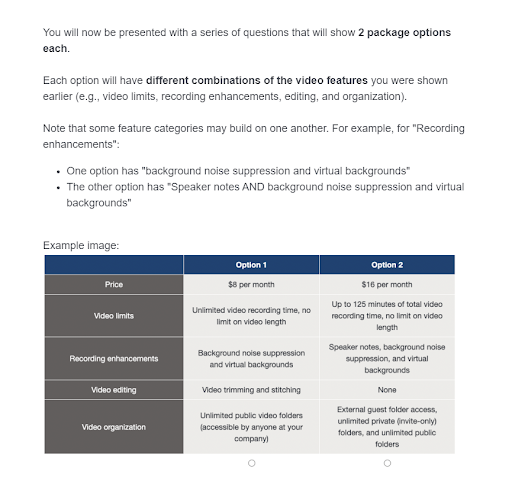
Strategy 8: Announce new features with context
New feature announcements keep your users up to speed with what's going on and provide invaluable engagements. But the right context can excite your base and really transform the impact of the announcement.
Explain the "why" and acknowledge user feedback
When announcing new features, tell users why the feature was developed and how it solves their problems. Link the update to specific user feedback so they know their input mattered. For example, Frill’s announcement tool connects the announcement to the feature request in a clean and concise presentation.

Personalize announcements by user segment
Tailor your feature announcements to different user groups. Enterprise users might care about security updates, while smaller customers focus on usability. Personalizing these announcements ensures each group feels the feature directly benefits them.
Strategy 9: Create feedback loops
Successful feedback is a give and take.
Close the loop with personalized responses
Don’t just collect feedback—let users know how their input has shaped product updates. Reach out with a personalized message or email when their suggestions lead to changes. This strengthens the customer experience and keeps them engaged.
And sometimes you have to say no. That’s ok. But, make sure you are saying no the right way.
Automate feedback loops for efficiency
Use automation to notify users when their requested features or ideas have been implemented. Automated emails or in-app updates save time and keep users informed without requiring manual outreach.
Strategy 10: Leverage feedback for customer retention
While you’ll want to keep your eyes forward with product development, don’t forget to pause sometimes and reflect on what's been built and how people are liking it.
Use feedback to identify churn risks
Feedback helps you spot potential churn risks. If several users mention a frustrating onboarding process, fix it quickly to keep them from leaving. Early intervention is key to improving retention.
Incorporate feedback into retention strategies
Integrate feedback into your retention efforts. Address user pain points by building features or improving usability. For example, developing a feature users consistently request can turn frustrated customers into loyal advocates.
In Summary
By implementing these feedback strategies, your SaaS company can build stronger relationships with their users, reduce churn, and create a product that truly meets customer needs. Leveraging customer feedback tools also helps with the process and allows you to keep your focus on product development.
Frill’s feedback, roadmap and announcement tool provides a great solution to streamlining the feedback process. The aim is to put your customers first and that’s what we do. Our prioritization strategy also makes it super easy to map priorities that really suit your business and users. So check us out and also have a look at our product feedback templates and examples.